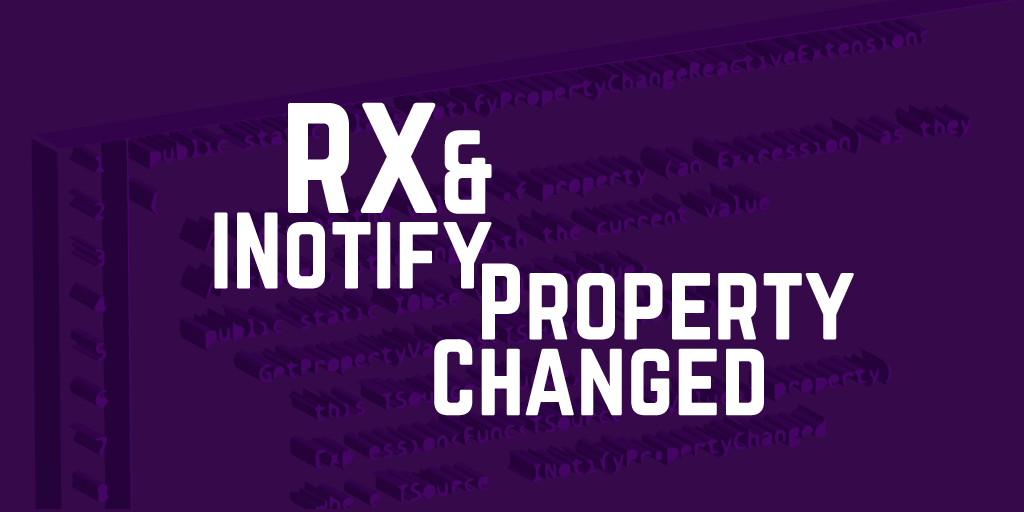RX and INotifyPropertyChanged

Richard Szalay has a great blog post which allows you to use the Reactive Extensions IObservable pattern to subscribe to INotifyPropertyChanged implementers.
However, the syntax is still a little bit clumsy.
By adding a few extra helpers to the class we can go from this:
viewModel.GetPropertyChangeValues(x => x.TheProperty).Subscribe(GetToWork);
To this
viewModel.Subscribe(x => x.SomeProperty, SomePropertyChanged);
Here's my slightly modified code.
public static class NotifyPropertyChangeReactiveExtensions
{
// Returns the values of property (an Expression) as they
// change, starting with the current value
public static IObservable<TValue>
GetPropertyValues<TSource, TValue>(
this TSource source,
Expression<Func<TSource, TValue>> property)
where TSource : INotifyPropertyChanged
{
MemberExpression memberExpression =
property.Body as MemberExpression;
if (memberExpression == null)
{
throw new ArgumentException(
"property must directly access " +
"a property of the source");
}
string propertyName = memberExpression.Member.Name;
Func<TSource, TValue> accessor = property.Compile();
return source.GetPropertyChangedEvents()
.Where(x => x.EventArgs.PropertyName == propertyName)
.Select(x => accessor(source))
.StartWith(accessor(source));
}
// This is a wrapper around FromEvent(PropertyChanged)
public static IObservable<IEvent<PropertyChangedEventArgs>>
GetPropertyChangedEvents(this INotifyPropertyChanged source)
{
return Observable.FromEvent<PropertyChangedEventHandler,
PropertyChangedEventArgs>(
h => new PropertyChangedEventHandler(h),
h => source.PropertyChanged += h,
h => source.PropertyChanged -= h);
}
public static IDisposable
Subscribe<TSource, TValue>(
this TSource source,
Expression<Func<TSource, TValue>> property,
Action<TValue> observer)
where TSource : INotifyPropertyChanged
{
return source
.GetPropertyValues(property)
.Subscribe(observer);
}
public static IDisposable
Subscribe<TSource, TValue>(
this TSource source,
Expression<Func<TSource, TValue>> property,
Action<TValue> observer,
Action onCompleted)
where TSource : INotifyPropertyChanged
{
return source
.GetPropertyValues(property)
.Subscribe(observer, onCompleted);
}
public static IDisposable
Subscribe<TSource, TValue>(
this TSource source,
Expression<Func<TSource, TValue>> property,
Action<TValue> observer,
Action<Exception> onException)
where TSource : INotifyPropertyChanged
{
return source
.GetPropertyValues(property)
.Subscribe(observer, onException);
}
public static IDisposable
Subscribe<TSource, TValue>(
this TSource source,
Expression<Func<TSource, TValue>> property,
Action<TValue> observer,
Action<Exception> onException,
Action onCompleted)
where TSource : INotifyPropertyChanged
{
return source
.GetPropertyValues(property)
.Subscribe(observer, onException, onCompleted);
}
}

Why should you layer your APIs like this? Read on here...




